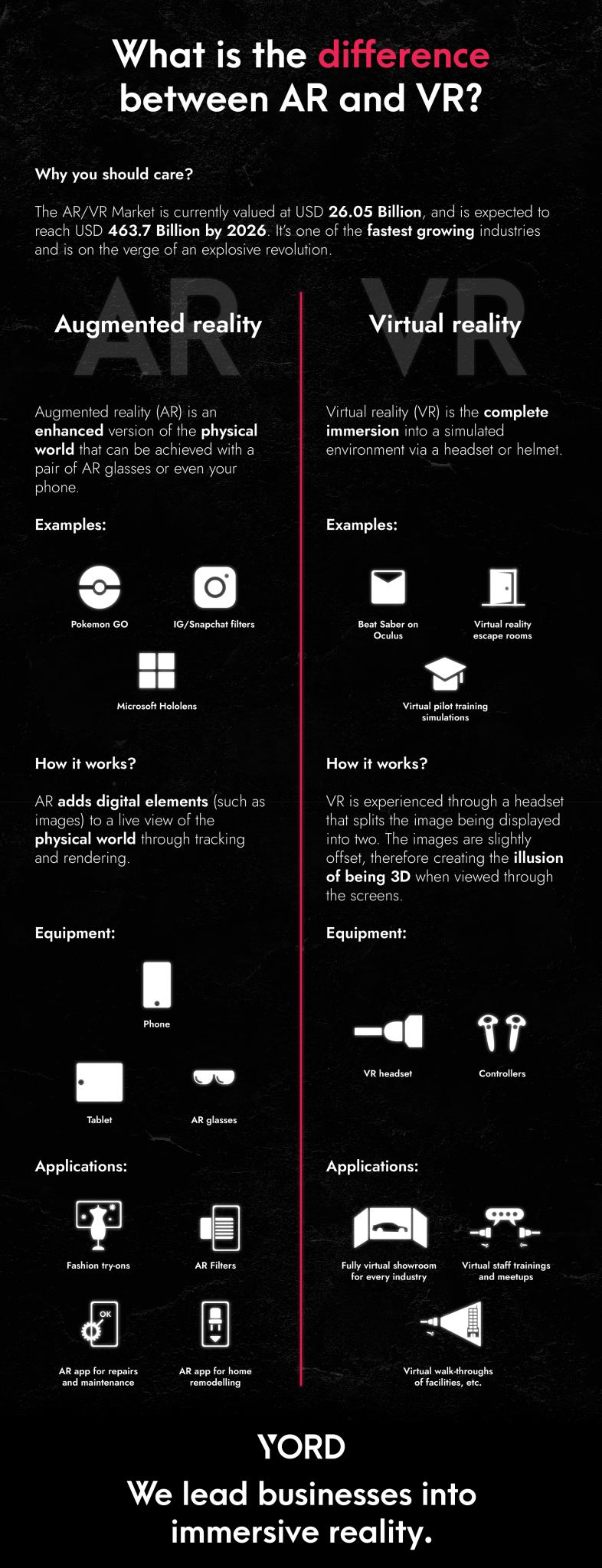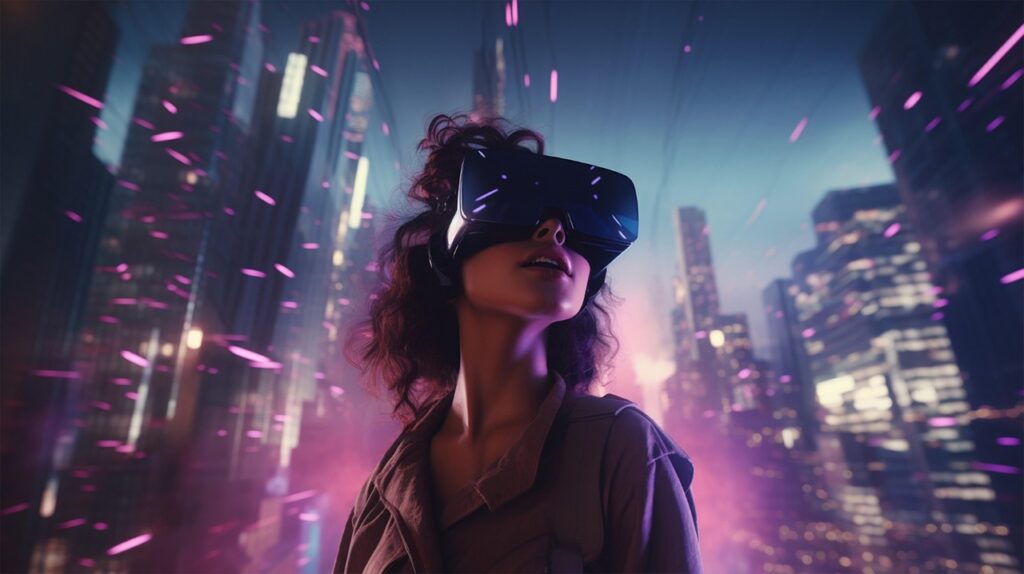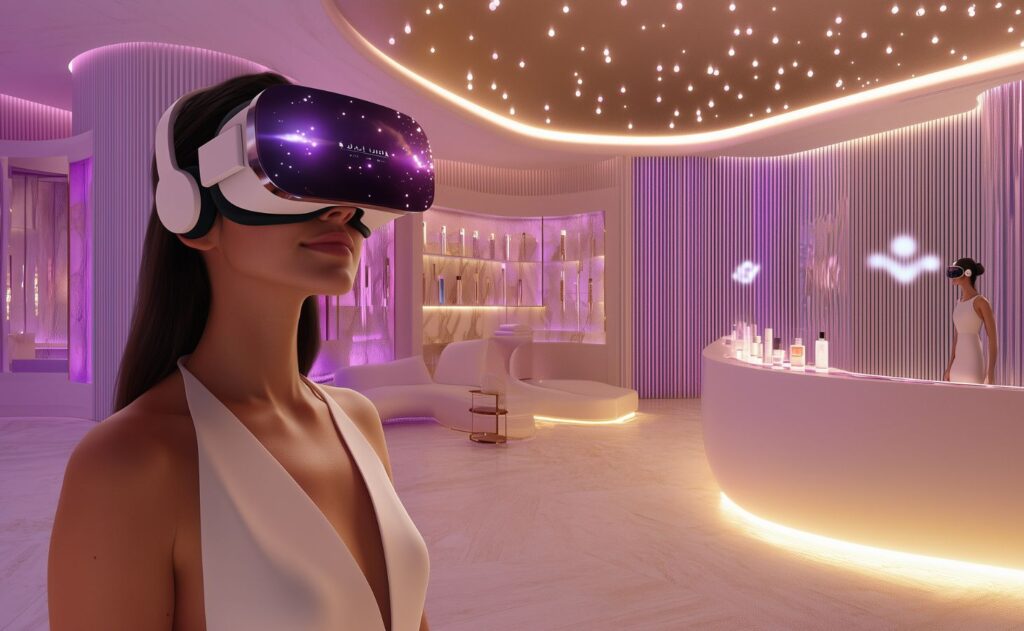You may have heard the words AR and VR floating around, but have been too afraid to ask what they really mean. We’re here to help! In this blog we’ll discuss: (1) What exactly is AR and VR, (2) what is the difference between VR and AR? and (3) which is better, VR or AR?
What is AR and VR?
Augmented Reality (AR) and Virtual Reality (VR) are both immersive technologies that differ in the devices being used as well as the level of immersion of the user. Think of it this way:
- Augmented Reality (AR) enhances the real world by adding digital elements to a live view.
For example: AR Filter on Instagram or the game Pokemon Go.
- VR is total immersion in a digital environment.
For example: BeatSaber on the Oculus Quest.
We also use terms like Mixed Reality (MR) and Extended Reality (XR). MR is the combination of AR and VR, where digital objects interact with the real world. A good example of this is the Microsoft Hololens, or smart glasses. XR is an umbrella term for all immersive technologies. You may see the term XR being used on our website in reference to our general work in VR and AR immersive technologies.
Curious how to implement VR and AR in your business? Click here.
What is the difference between AR and VR?
Check out this helpful infographic to learn more about the differences between AR and VR:

As you can see from the above graphic, AR and VR differ in the level of immersion of the user, the devices used and the application in the real world.
Augmented Reality, or an enhanced version of the physical world, uses smartphones, tablets and AR glasses to partially immerse the user in the experience. Applications of this technology can include AR Filters, AR apps for repair and maintenance, Fashion try-ons, AR apps for home remodeling etc.
Virtual Reality, or the complete immersion in a digital space, is experienced through a headset that splits the image being displayed into two. The images are slightly offset, therefore creating the illusion of being 3D when viewed through the screens. Notable examples of VR headsets are the Oculus Quest, HTC Vive, Oculus Rift and Sony PlayStation VR. We will discuss the pros and cons of popular VR headsets in a future blog post. Applications for VR include fully virtual showrooms for every industry, virtual staff trainings/meet ups, virtual walk-throughs of facilities etc.
Check out more of our AR and VR projects here.

Which is better: AR or VR?
We get asked this question a lot and there really isn’t a simple answer. AR and VR both have great applications in every industry, but some projects are better suited to one rather than the other. For example, in-store experiences can utilize both AR for Smart Mirrors and VR for immersive customer experiences. However, if your customers are at home using their smartphones, an AR solution, like a virtual try-on or AR Filter would be more suited. Other factors to consider are cost, accessibility, and application. Don’t know where to start? Don’t worry: our XR Consultants are here to help.
👋 get in touch
By clicking the “send” button, I agree to the collection and processing of my personal data as described in the Privacy Policy.




